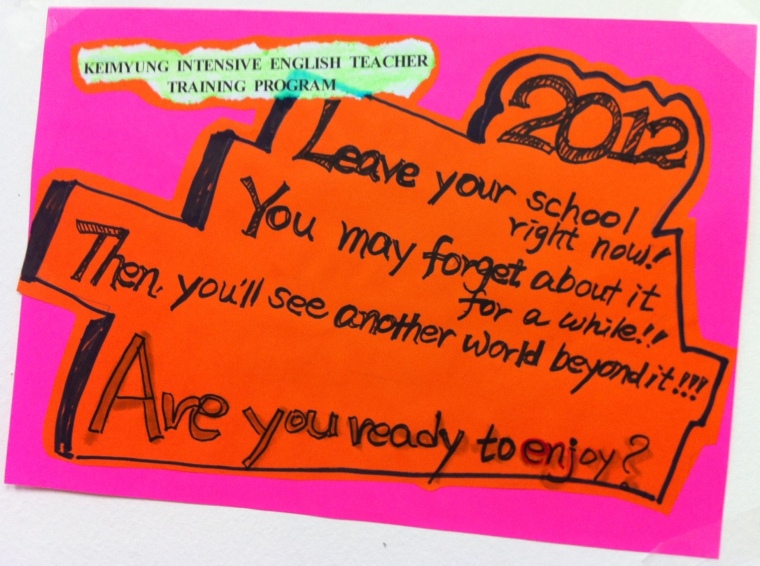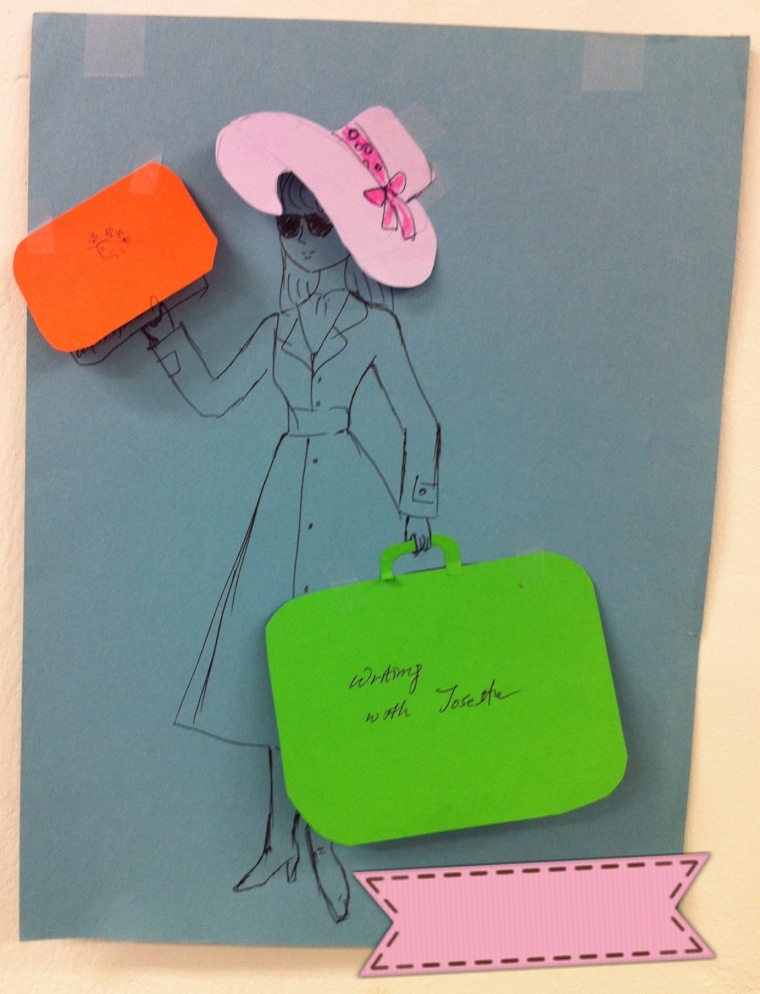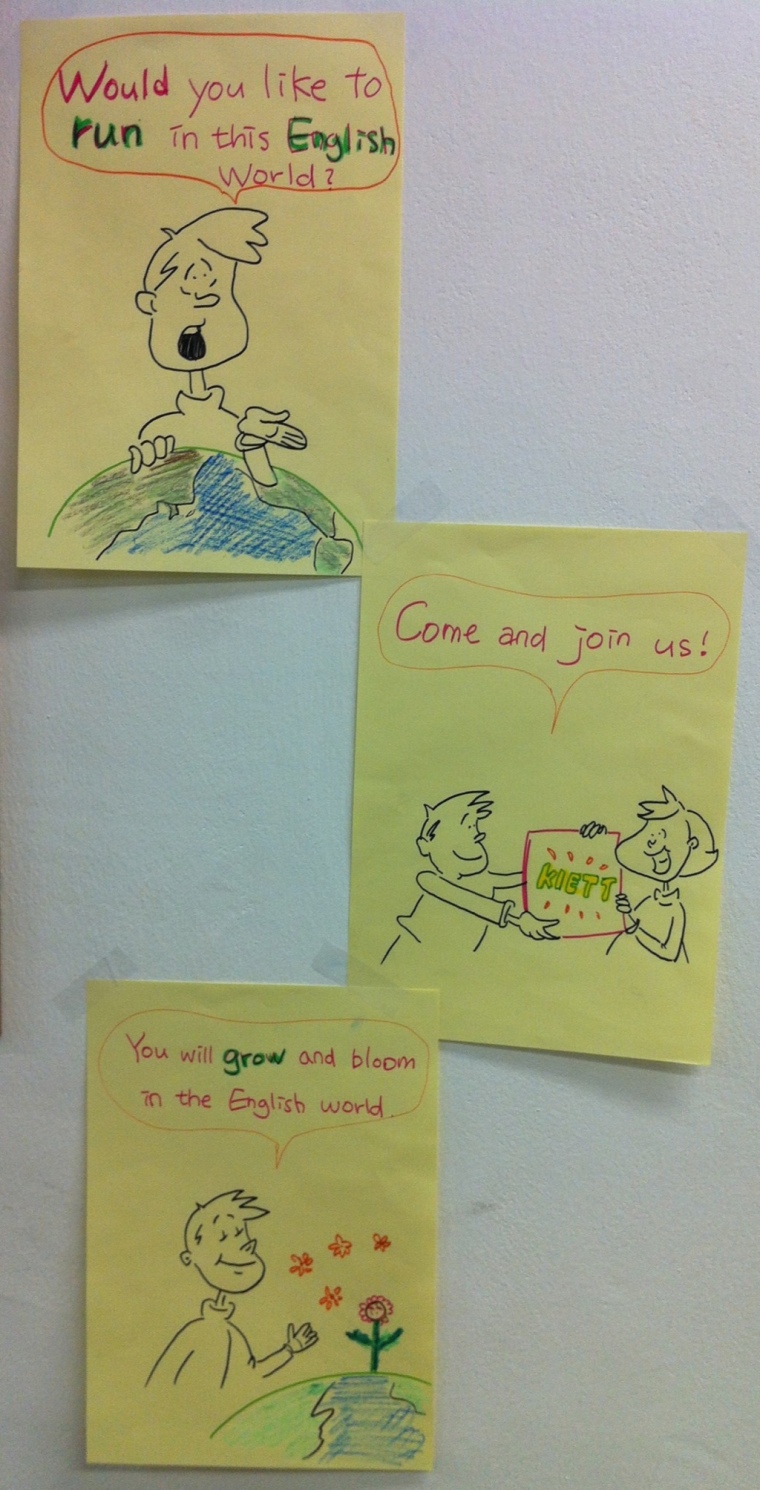On Friday, the February 2013 SIT TESOL course at Centro Espiral Mana ended. When a course closes here, participants are asked to create a final learning statement, summarizing what they have learned over the four weeks. Some participants wrote songs, poems, or essays, some created visual representations, and others recorded narratives. Each of these creations highlighted the inspiring process that goes on at Centro. Tony Paredes — a teacher from Tarapato, Peru — created the comic strip below. I asked Tony if I could share his learning statement because I thought it was a great example of how some experienced teachers feel after taking this course. As Tony shows us, it’s truly transformative.
Category: Reflection
The difference between love and a stick
Each semester, I get to know our course participants via dialogue journals. I’ve written about my apprehension in giving this assignment in past (The Bittersweetness of Dialogue Journals – Take 2), but this journal entry, written by Mr. Go Jong-hyun, is another wonderful reminder of why I keep doing it.
Mr. Go was kind enough to let me share his entry with all of you. This is especially meaningful considering the topic of my last post, The love stick that motivates (I highly recommend reading the heart-wrenching, yet enlightening, comments).
In response to the question, Who was your favorite teacher? Why was he or she your favorite teacher? How would you like to be like him/her?, Mr. Go writes:
I was asked those questions in the test to become an English teacher several times. Whenever I think about it, I cannot help remembering my old home room teacher whose name was Kyoung-hwa Kim in the middle school. I was second to last in the elementary. I even had to have the supplementary classes for the students of underachievement in the elementary school. I was beaten with sticks, even slapped in my face by some of my home room teachers because I couldn’t do my homework. No teachers complimented me because I was poor at studying. However, I took the head in cleaning up the classroom. When I was a first grader in the middle school, most students shirked their duty during the clean-up time, but I steadily cleaned up my area. One morning, Ms. Kim spoke high of me because I cleaned the classroom diligently in front of the all classmates. She also said I would excel in study. I was panicked for a while, but very happy to hear that. Her compliment changed me. Her positive reinforcement and trust in me got me not to let her down. I studied and tried to be the best student to rise to her compliment. Finally, my score improved very much, and I became a class leader. I can’t forget her, and am in debt forever to her. Kyoung-hwa Kim was and is my favorite teacher always because she was the best example of the teacher.
The compliment and belief of a teacher have wonderful and compelling power to change and motivate students. I teach where there are many naughty and low-level students comparing with the other academic high schools. However, I always try to look on the bright side of them, and believe them. I always made zealous effort to have trust in my students; they can be changed. I believe the power of optimism and trust. I will compliment my students on every efforts, unique talents and strong points as well as good scores like my great teacher, and then students will rise to my expectations.
Thank you so much Mr. Go.
The Creative Joy of Final Learning Statements
In three days, our training course will be over. In these final days, it’s time for participants to look back over their four months together and reflect on what’s been meaningful and what they’ve learned. To help them do this, I asked them to respond to a list of questions Mary Scholl (SIT teacher-trainer) created and kindly shared with me. Below are a few examples:
- If you were to choose 10 words to describe your experience in the course, what would they be?
- If your experience in the course were like weaving a beautiful cloth, what would be the threads that hold the cloth together?
- How would you explain your experience in this course to a five year old?
- What would your ideal motto be in the future?
- If you had to sell this course, what would your slogan and ad campaign look like?
- Go through all of your journal entries from the course. Choose the ones that are most meaningful to you. Why are they meaningful?
- Make a metaphor for how the course has affected you. Be juicy and deep in your description.
With these questions, they created final learning statements that would then become the front cover of their learning portfolios. They kept this portfolio throughout my writing course. I encouraged the participants to be as creative as they wanted, and as you’ll see, they didn’t hold back. During our final learning statement gallery walk (gallery walk explanation coming soon), I was inspired at each turn. I hope you feel inspired too.
Please enjoy the artistic exhbilition of learning!
Privacy tip: Notice the funky, random strips on some of the statements? To keep the anonymity of my participants, I used the smartphone app Labelbox to cover their names.
Linking Experiences: How We Learn to Teach
What do Penny Ur, Willy Cardoso, and James E. Zull have in common? They all presented at the 2012 IATEFL Conference, and they all referenced the connection between reflecting on experience and learning.
If you know me, or my blog, you know that I’m quite passionate about the subject of reflective teaching. I’ve done a few presentations/workshops on the subject, and will soon be doing another at the KOTESOL Reflective Practice Symposium in Busan on April 21. I’m very excited about this, especially since I’ll be in the good company of friend and reflective practitioner, Michael Griffin.
This shameless plug is simply to say that when I saw these three speakers on Glasgow IATEFL Online, my mind quickly made links to how their individual takes on teaching and learning connected to my understanding of the experiential learning cycle and reflective practice. Here are the links I noticed.
Continue reading “Linking Experiences: How We Learn to Teach”
Celebrating Creativity: Acrostic Poetry & Summer Vacation
Acrostic Poetry Teaching/Learning Tool
There is some kind of magic in acrostic poetry. Each semester, when I teach this poetry, I am always impressed by the creative ways with which my participants play with their words. This semester I was particularly taken aback by this poem.
What struck me when I read this poem in Lim Seungcheol’s reflective journal were the multiple layers of understanding he had created. He used the acrostic poem as a medium to reflect his understanding of this type of poetry. But the beauty of it is that not only was it a tool for deepening his understanding, now it is also a teaching tool for when he goes back school. He will be able to share this poem with his students to help them understand the basic rules of an acrostic poem.
Continue reading “Celebrating Creativity: Acrostic Poetry & Summer Vacation”


















